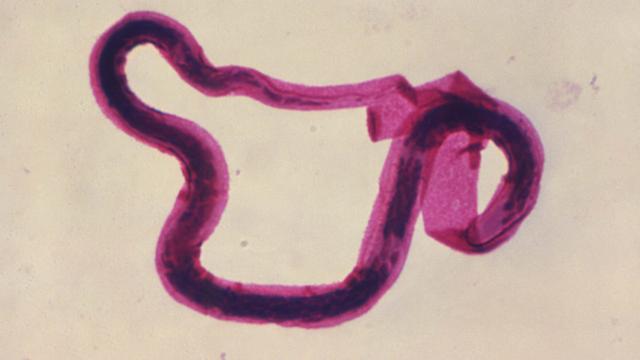There’s no good place for parasitic worms to wreak havoc in the human body, but doctors in India say their 80-year-old patient developed a particularly unfortunate case. The man’s worm infection left him with a massively swollen, calcified right testicle.
According to the paper, published earlier this month in BMJ Reports, the man had visited the doctor complaining of blood in his urine, a common sign of a urinary tract infection. But when he was physically examined, doctors spotted that he had a “grossly enlarged” right testicle next to his normal left testicle. What’s more, the testicle felt “stony hard” to the touch.
Once the man was examined via CT scan, doctors saw a fluid-filled sac that wasn’t supposed to be there. The type of sac they discovered is called a hydrocele, which forms when fluid builds up in a thin lining that surrounds a testicle. It often shows up in newborns, disappearing by the time they turn one without causing any damage. But when it happens in older men, it’s usually because of a local injury or inflammation to the scrotum, the latter of which is often caused by an infection.
In this case, doctors suspected that the man had been infested by a species of filarial worm, which are thread-like nematodes commonly found in hotter areas of the world. These worms are spread to people as larva via mosquito bite, then migrate to the lymph nodes scattered across the body, including the ones near our scrotum.
At first, some victims may experience little more than a flu-like illness, while most will feel nothing. But if an infection goes untreated, the larva produced by adult worms can go on to block important lymphatic vessels that trigger bouts of painful swelling and make people more vulnerable to other infections. If this happens for long enough, the swelling can permanently disfigure the affected parts of the body, a condition known as elephantiasis.
Lymphatic filariasis, as it’s known, is unfortunately endemic in India. And in endemic parts of the world, these infections are actually the most common cause of hydrocele in men, according to the case study authors. But the “eggshell calcification” of the man’s testicle is an extremely rare complication, likely the result of a very long infection within the sac, one that caused calcium to form around it.
These infections are only somewhat treatable in endemic areas. Current drugs taken yearly can kill off most of the larval worms produced by adults, which can lower the risk of complications and cut off the cycle of transmission from infected people back to mosquitos. But they have a limited effect on adult worms, which can live up to eight years in the body. Other treatments such as surgery are also needed for the complications caused by a chronic infection, including the removal of hydroceles.
The authors don’t describe how their patient was treated. But echoing recommendations established by the World Health Organisation, they do advocate that people living in high-risk areas are treated with anti-filarial drugs annually, regardless of their infection status. According to WHO, nearly 900 million people in 49 countries are in need of preventive treatment, while 25 million men with the infection have hydroceles.
